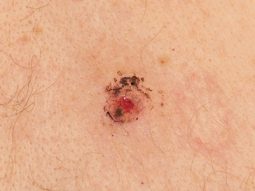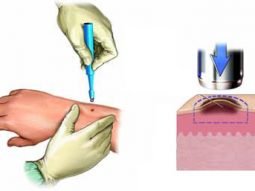Screening for sexually transmitted diseases (STDs) will help protect you and your partner. Many STDs do not have obvious symptoms but can be easily cured. If left untreated, an STD can cause severe health problems for you, your partner or unborn baby.
Consultation with the doctor is required to ensure that correct tests are requested and performed based on your clinical presentation and personal history.

SYPHILIS SCREENING (VDRL/RPR & TPHA)
What is being tested?
Syphilis is a sexually transmitted infection caused by the bacteria Treponema pallidum. Tests used will look for antibodies in blood that are produced in response to a T. pallidum infection.
When to get tested?
When you suspect symptoms of a syphilis infection; when you have a risk of exposure e.g. when you have another STD or HIV infection, your sexual partner has been diagnosed with syphilis, engaging in high-risk sexual activities, are pregnant or when you are a man having sex with other men
How is the sample collected?
- Blood is drawn from a vein of the arm.
What do the results mean?
A negative result for both VRDL and TPHA means there is no evidence of disease
A positive for both VRDL and TPHA confirms a syphilis infection
A positive VDRL result with a negative TPHA result may mean a false VRDL positive and further testing may be recommended by your doctor.
CHLAMYDIA
What is being tested?
Chlamydia is one of the most commonly encountered bacterial STDs and can result in serious complications if not treated. The test performed is for identifying the bacteria, Chlamydia trachomatis which causes the infection.
When to get tested?
For women:
- Annually if you are sexually active and younger than 25 years or older women with risk factors including new or multiple sex partners, or a sex partner who has a sexually transmitted infection.
- If you are pregnant or considering pregnancy
- When you have symptoms including pain during urination, vaginal discharge and abdominal pain
For men:
- Annually if you are a man who has sex with other men
- When you have symptoms such as pain during urination
For newborns
- When a newborn baby has conjunctivitis
How is the sample collected?
For women:
- A swab or secretion from your vagina
For men:
- A swab from your penis
What do the results mean?
A positive result confirms an active infection which requires treatment.
A negative result means there is no evidence of infection.
- It is essential for people at increased risk to repeat screening tests annually to check for possible infection because re-infection is common.
If you are infected, your sexual partner(s) must be tested and treated as well.
GONORRHOEA
What is being tested?
Gonorrhoea is another commonly encountered bacterial STD which can result in serious complications if not detected and treated. The test performed is for identifying the bacteria, Neisseria gonorrhoeae which causes the infection.
When to get tested?
For women:
- Annually if you are sexually active and younger than 25 years or older women with risk factors including new or multiple sex partners, or a sex partner who has a sexually transmitted infection.
- If you are pregnant or considering pregnancy
- When you have symptoms including pain during urination, vaginal discharge or vaginal bleeding between menstrual periods.
For men:
- When you have symptoms such as pain during urination, unusual discharge from the penis or painful, swollen testicles.
For newborns
- When a newborn baby has conjunctivitis
How is the sample collected?
For women:
- A swab or secretion from your vagina, or
- The first portion of your urine stream
For men:
- A swab from your penis, or
- The first portion of your urine stream
What do the results mean?
A positive result confirms an active infection which requires treatment.
A negative result means there is no evidence of infection.
- It is essential for people at increased risk to repeat screening tests annually to check for possible infection because re-infection is common.
If you are infected, your sexual partner(s) must be tested and treated as well.
UROGENITAL SCREENING (TRICHOMONAS, MYCOPLASMA AND UREAPLASMA)
What is being tested?
Trichomonas vaginalis is a parasite that causes vaginal infections in women and urethral infection in men. Ureaplasma urealyticum and Mycoplasma hominis are primarily associated with genital tract colonisation and disease in adults and respiratory tract colonization and disease in newborns. The test performed is for identifying these organisms in a genital sample collected from you.
When to get tested?
When you have symptoms of infection; in women this could be a foul-smelling vaginal discharge, genital itching, or pain during urination; in men this could be genital itching/ irritation, burning after urination or ejaculation, or a discharge from the penis.
How is the sample collected?
For women:
- A swab or secretion from your vagina, or
- The first portion of your urine stream
For men:
- The first portion of your urine stream
What do the results mean?
A positive result confirms an active infection which requires treatment.
- Positive results for Ureaplasma and/ or Mycoplasma will include susceptibility test results to help guide the doctor on appropriate treatment.
A negative result means could mean there is no infection with these organisms and symptoms are due to another cause.
- Your doctor will advise further if symptoms persist.
HIV
What is being tested?
Human immunodeficiency virus (HIV) is the cause of acquired immunodeficiency syndrome (AIDS). The HIV test detects HIV antibodies and/ or the HIV p24 antigen in blood.
When to get tested?
- At least once a year if you are at increased risk of exposure e.g. having unprotected sex, sharing injection needles or sexually active gay or bisexual men.
- When you think you may have been exposed to the virus
- Before becoming pregnant or when pregnant
How is the sample collected?
- Blood is drawn from a vein of the arm.
What do the results mean?
A negative result means there is no evidence of infection.
- It is essential for people at increased risk to repeat screening tests annually to check for possible infection because re-infection is common.
- If you have recently been exposed to the virus, it is advisable to repeat testing after 4 – 6 weeks for confirmation
A positive result confirms infection which requires treatment.
HEPATITIS B
What is being tested?
Hepatitis B (Hep B) is a liver infection that is caused by the hepatitis B virus (HBV). HBV is spread through contact with blood or other body fluids from an infected person. Exposure can be through sharing injection needles or through unprotected sex.
Hepatitis B blood tests detect viral proteins and/ or antibodies produced by the body in response to an infection. Testing will include Hep B surface antigen (HBsAg), Hep B surface antibody (anti-HBs) and Hep B core antibody (anti-HBc).
When to get tested?
- When you are at a high risk of exposure to HBV through regular contact with blood or other body fluids from other persons e.g. having unprotected sex, sharing injection needles or workplace exposure
- When you have hepatitis signs and symptoms e.g. jaundice or unexplained abnormal liver function test results
- When you have a condition that requires use of immunosuppressive drugs or chemotherapy
How is the sample collected?
- Blood is drawn from a vein of the arm.
What do the results mean?
The chart below provides a summary of possible interpretations:


 Vi
Vi 












